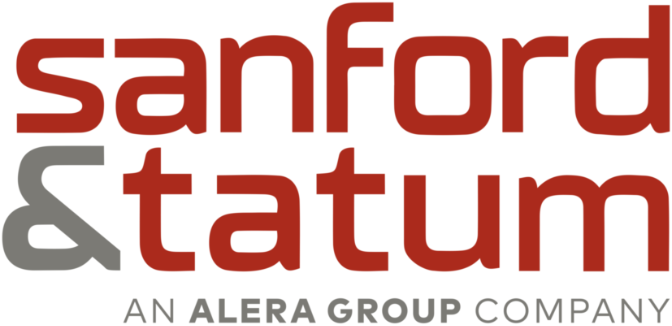
Tips to Improve Mental Health Benefits Utilization
In the last few years, mental health in the United States has been on the decline. A 2024 Gallup poll revealed that only 31% of Americans report “excellent” mental health, down from 43% in 2019. The rise in mental health concerns has led to the demand for employers to offer more robust mental health benefits.
Despite employers prioritizing mental health benefits as part of their offerings in the last few years, many employees are still not using them. This lack of utilization prevents employees who may benefit from these offerings from receiving help and can negatively impact employers. Workforces with poor mental health can lead to decreased employee well-being, lower morale and productivity, increased absenteeism and potentially high turnover rates.
To improve mental health outcomes, it’s crucial to do more than just offer the right benefits. Employers can take measures to increase employee utilization of their mental health resources. This article outlines common mental health benefits, discusses reasons why employees aren’t using them and provides tips for employers to improve the utilization of these benefits.
Common Mental Health Benefits
By offering various mental health benefits, employers can give their employees many options for managing stress, improving their emotional and mental well-being, and supporting their focus and productivity in the workplace. Here are common mental health benefits employers offer:
- Flexible work schedules include flexible schedule options, compressed workweeks, or remote and hybrid arrangements.
- Therapy coverage can cover costs for access to mental health professionals, such as therapists and counselors. Employers that offer mental health or substance abuse disorder benefits are required to provide them on equal terms with medical and surgical benefits.
- Psychiatric care coverage can assist with expenses for psychiatric services, such as evaluations, medication management and ongoing treatment.
- Employee assistance programs are voluntary programs provided through employers that offer confidential assistance with personal or work-related issues.
- Mental health days are paid time off (PTO) specifically meant for employees to focus on their mental health.
- Wellness programs offered through employers are designed to target physical, mental or emotional health.
- Mental health first-aid training teaches employees how to recognize signs of mental health issues and provide support.
Why Aren’t Employees Using Mental Health Benefits
A report from Amazon’s One Medical found that in 2022, only 19% of workers accessed mental health care benefits. In order to strategize ways to increase mental health benefit utilization, it’s essential to understand the barriers preventing employees from utilizing them. There are several reasons why employees are not widely utilizing employer-provided mental health benefits, such as the following:
- Lack of communication—According to a survey conducted by the National Alliance on Mental Illness with Ipsos, about 1 in 4 workers don’t know if their employer offers mental health benefits. Employees may simply be unaware of the benefits their organization provides.
- Insufficient education—Employees may lack the training and information on how to access mental health benefits.
- No time—Many workers don’t make time to learn about the mental health benefits their employers provide.
- Mental health stigma—Some employees may still face a stigma related to mental health or be perceived negatively for seeking assistance.
- Cost concerns—While many benefits resources may be low- or no-cost to employees, they may not be aware of what resources are cost-effective or have cost concerns. Potentially high costs of some mental health benefits, such as deductibles and out-of-pocket expenses, could prevent employees from utilizing them. Additionally, employees may not know what care is covered under their health plans.
Tips to Improve Mental Health Benefits Utilization
To improve the utilization of health care benefits among employees, employers can consider the following practices:
- Train managers on the available benefits. Managers can be key to the utilization of mental health benefits. Since employees interact with managers often, these leaders are well-positioned to promote mental health care and related resources among employees. Thoroughly training these leaders on available benefits allows them to share information with employees or be available for questions.
- Regularly educate employees on offerings. While open enrollment is a great time to highlight benefits resources, mental health benefits should be communicated regularly throughout the year so that employees continually know what resources are available to them. Employers can effectively communicate and provide education through multiple channels, including emails, newsletters and meetings.
- Foster a mental health-friendly culture. Creating a company culture that is supportive of mental health may encourage employees to use mental health benefits. Employers and managers should encourage open communication about mental health and available resources.
- Help employees understand and access their benefits. Providing clarity on how to use their benefits can make employees feel more confident in accessing them.
- Get feedback on desired benefits. Gathering employee feedback on which mental health benefits they find useful can help employers tailor their benefits options to maximize utilization. Employers can use anonymous surveys to obtain this information, and they should communicate any changes made based on the feedback received.
Conclusion
Even though the availability of mental health benefits has increased in the last few years, many employees have not been using them due to a number of barriers. By understanding these barriers to utilization and implementing strategies, employers can improve the effectiveness of their mental health benefits. This can enhance employees’ well-being as well as support productivity and engagement, ultimately contributing to organizations’ bottom line.
Contact us for more benefits resources.
This Benefits Insights is not intended to be exhaustive nor should any discussion or opinions be construed as professional advice. © 2025 Zywave, Inc. All rights reserved.

Discussion
There are no comments yet.